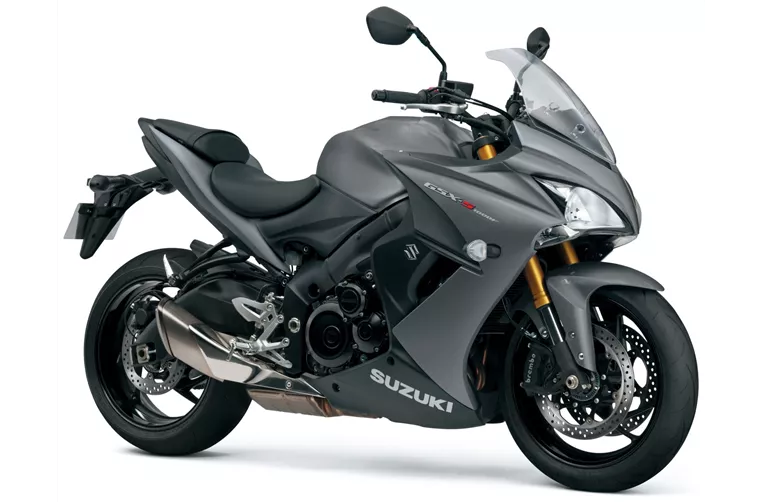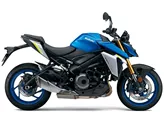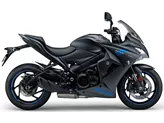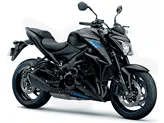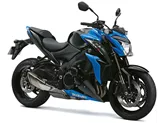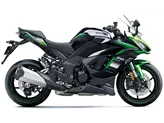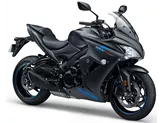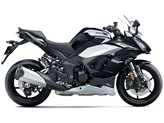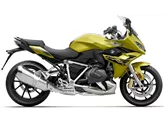Kawasaki Z1000SX 2017 vs. Suzuki GSX-S1000F 2016

Kawasaki Z1000SX 2017

Suzuki GSX-S1000F 2016
Overview - Kawasaki Z1000SX 2017 vs Suzuki GSX-S1000F 2016
The Kawasaki Z1000SX 2017 and the Suzuki GSX-S1000F 2016 are both sport touring motorcycles that offer a combination of performance and comfort for riders who enjoy long rides and occasional track days.
In terms of engine power, the Suzuki GSX-S1000F 2016 has a slight advantage with 149 HP compared to the Kawasaki Z1000SX 2017's 142 HP. However, the Kawasaki Z1000SX 2017 compensates with a torque of 111 Nm, which is higher than the Suzuki GSX-S1000F 2016's 106 Nm. Both motorcycles have a 4-stroke, in-line engine type with a displacement of 999ccm for the Suzuki and 1043ccm for the Kawasaki.
Both motorcycles feature upside-down telescopic forks for the front suspension with a travel of 120mm and adjustments for compression, preload, and rebound. The rear suspension is a swing arm with a monoshock and a travel of 144mm for the Kawasaki and 130mm for the Suzuki. Both motorcycles have adjustments for compression, preload, and rebound for the rear suspension as well.

Kawasaki Z1000SX 2017
In terms of brakes, both motorcycles have double disk brakes at the front, but the Suzuki GSX-S1000F 2016 has a slightly larger diameter of 310mm compared to the Kawasaki Z1000SX 2017's 300mm. Both motorcycles use advanced rider assistance systems such as ABS, but the Suzuki does not have traction control, unlike the Kawasaki.
The chassis of both motorcycles is made of aluminum, providing a lightweight and rigid structure for better handling and stability.
In terms of dimensions and weights, both motorcycles have the same front and rear tire widths and diameters, with a wheelbase of 1440mm for the Kawasaki and 1460mm for the Suzuki. The seat height is the same for both motorcycles at 815mm. The Kawasaki Z1000SX 2017 has a higher kerb weight of 235kg compared to the Suzuki GSX-S1000F 2016's 214kg. The fuel tank capacity is also larger for the Kawasaki at 19 liters compared to the Suzuki's 17 liters.

Suzuki GSX-S1000F 2016
In terms of strengths, the Kawasaki Z1000SX 2017 has a great tuned engine, strong brakes, and easy driveability combined with high performance. On the other hand, the Suzuki GSX-S1000F 2016 has a top exciting engine, strong Brembo brakes, great accessories, and fine traction control.
In terms of weaknesses, the Kawasaki Z1000SX 2017 is sensitive to tire choice, which means that the choice of tires can significantly affect the motorcycle's performance. The Suzuki GSX-S1000F 2016, on the other hand, has ABS that is not sporty enough, limited wind protection, and a knee angle that is a little too acute for some riders.
Overall, both the Kawasaki Z1000SX 2017 and the Suzuki GSX-S1000F 2016 are excellent sport touring motorcycles that offer a balance between performance and comfort. The choice between the two will depend on individual preferences and priorities.
Technical Specifications Kawasaki Z1000SX 2017 compared to Suzuki GSX-S1000F 2016
Pros and Cons in comparison
Pros and Cons in comparison
Kawasaki Z1000SX 2017

Kawasaki's Z1000SX is a harmonious motorbike. Brakes, engine and chassis are all in good order. The look is a bit aggressive, but the bike is easy and transparent to ride.
Suzuki GSX-S1000F 2016

The GSX-S1000F is basically a GSX-S1000 with which it shares all the geometry, with a bit of added value that pays off quite well. More stability at higher speeds, more wind protection and overall more compatible with the engine's character. The GSX-R engine is still a force, even if it has run out of juice a bit down low. Suzuki also offers a great price/performance ratio here.
Price Comparison Avarage Market Price Kawasaki Z1000SX vs Suzuki GSX-S1000F
There are a few key differences between a Kawasaki Z1000SX 2017 and a Suzuki GSX-S1000F 2016. It takes less time to sell a Kawasaki Z1000SX with 103 days compared to 140 days for a Suzuki GSX-S1000F. Since model year 2011 1000PS.de editors have written 14 reviews for the Kawasaki Z1000SX and 10 reviews for the Suzuki GSX-S1000F since model year 2015. The first review for the Kawasaki Z1000SX was published on 05/10/2010 and now has more than 9,900 views. This compares to more than 13,100 views for the first review on Suzuki GSX-S1000F published on 30/09/2014.

